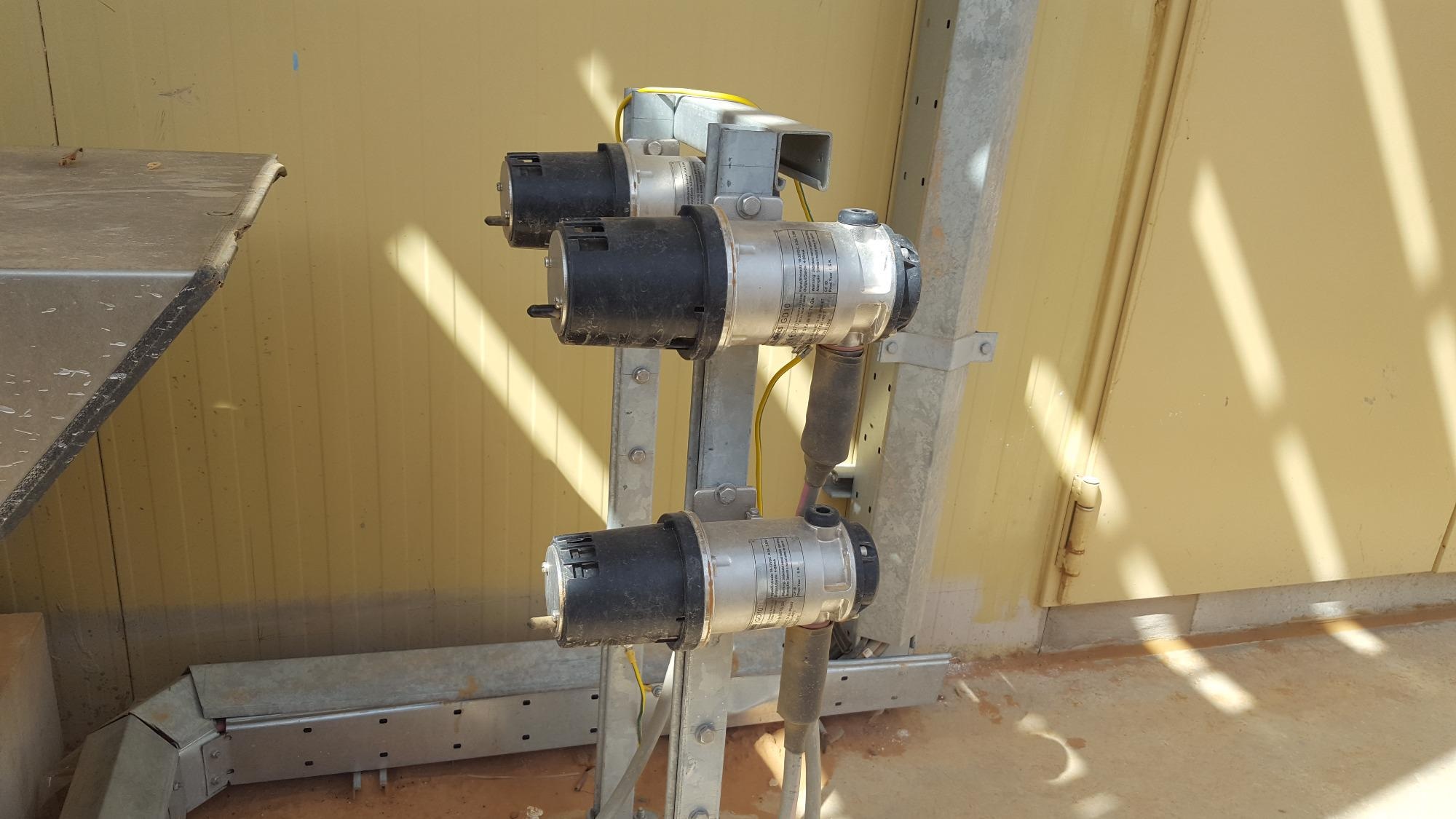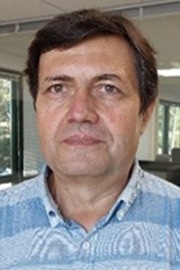In this interview, Laurent Pascou, Safety Software Engineer at Teledyne Gas and Flame Detection, introduces the latest generation of IR Gas Sensor.
GD10P is an updated version of the gas detector. Could you tell us more about the upgrades which took place?
The upgraded model features an array of improvements and new features.
First of all: better confidence. Its previous software certification was based on proven-in-use arguments (route 2S) which implies, in the latest IEC 61508 standard version, that one needs at least two detectors per point for SIL2 integrity in frequent or continuous demand context.
To address this problem, on one hand, we kept the widely proven-in-use hardware and on the other we redeveloped the software. We switched to 1S route by implementing a SIL3 compliant development process and recertified the detector. As a result, not only we recovered the SIL2 level in all operation contexts with only one detector per point, but now one can implement SIL3 safety functions using redundant architectures in full confidence.
Another major improvement is a practically unlimited range of detected gases, including but not limited to Acetone, Acetylene, Benzene, Carbon dioxide, Cyclohexane, Ethanol, Ethane, Ethylene, Hexane, Methane, n-Butane, Pentane, Propane, Styrene and Toluene. As opposed to the past, when only a few absorption curves where hardcoded in the detector, we are now able to generate them on demand for new gases and load them as needed instead of using the closest available curve. We can now easily add new gases to our portfolio and improve detector accuracy over its whole scale for some of the existing ones.
A multitude of detector parameters are now configurable by the client, in wider ranges: response time from 1 to 9 seconds, overscale behaviour and current levels, maintenance current level (output when site maintenance is performed) and so on. They add up to the ones already available for the HART handheld and are accessible today by specific messages; an updated version of the interface (DD) file will be coming soon.
Furthermore, the old proprietary communication protocol over RS485 was replaced by an open MODBUS compliant one, allowing for future applications and maintenance tools development.
Diagnose capabilities were greatly improved, easing up work for maintenance teams. Detailed information concerning calibration state, electronic cards or optical module states are now available through both HART and MODBUS interfaces.
Last but not least, security has been given a central place in the design of the new version. Essential configuration parameters modification (gas curves and related) is protected by a strong password, specific to each detector. Client configurable parameters are protected by a password that is modifiable by the user and can only be unlocked by the manufacturer in case it is lost. This goes as well for the HART and for the MODBUS interfaces; in both cases, the maintenance privileged access is cancelled automatically on reset or after 10 minutes of inactivity.

Image Credits: Teledyne Oldham Simtronics SAS
What are the technical differences between the GD10P gas detector and other IR detectors?
The GD10P’s solid-state infrared source makes this device stand out from other infrared gas detectors. The robust, reliable optical block built with it features unparalleled detector stability with no need to calibrate in the field or replace IR sources.
Moreover, the detection chamber length is largely superior to other IR detectors which ensures high sensitivity, accuracy, and fast response times as short as 1 sec. The sapphire lens and mirror are practically immune to scratching during cleaning interventions. To crown it all, the optical module is heated, which prevents water vapour condensation from altering the measuring process when temperature variations occur.
But what makes GD10 unique is its double compensation mechanism: for IR source decay and for dirt presence in the detection chamber. Thus, not only measured values do not depend on these factors, but the detector is able to diagnose and signal incipient source failures and dirt presence, allowing pre-emptive maintenance to occur.
High durability + low maintenance requirements + preventive failure announcements = high reliability in operation and low total cost of ownership.
While gas detectors are essential for safety, what are the safety assessments conducted to assure the functional safety standards?
Safety is central to the design and development of the GD10P IR gas sensor.
To begin with, we have improved our predictive failure rates evaluation by using the FIDES Expertool reliability calculation tool and the IEC 62380 database; the operation mode and environment factors were taken into account as specified by this standard. We used failure modes and effects analysis (FMEA) to classify failures in safe / dangerous categories and then diagnostics were taken into account to further part them in detected / undetected, as required by the IEC 61508 standard. The safe failure fraction (SFF) could then be derived.
With a dangerous fault rate of less than 30 per billion hours and a safe failure fraction better than 97%, the detector easily meets SIL2 requirements with only one proof test per year and 72 hours maximum delay for detected faults repair.
For software, our development process implemented measures highly recommended by the IEC 61508 standard for SIL3 level: requirements database stored in an application life management (ALM) tool, automated unit tests, extensive functional tests. Automatically generated traceability reports as well as test coverage reports were used to assess development process validity from requirements to the final product and were delivered to the third-party certification authority.
As a result, the detector is certified to satisfy the IEC 61508 norm requirements to be operated in SIL2 high demand safety functions, which means that it can confidently accommodate multiple demands for operation per year; this is a requirement seen more and more frequently for gas detectors throughout the industry nowadays. And in some applications (gas turbines) continuous supervision with response times less than 2 seconds is implemented!
The systematic capability level 3 (SC3) certified development process also allows the detector to be employed in redundant architectures for implementing SIL3 safety functions, as mentioned before.
Finally, the GD10P manufacturing site (Arras, France) has been audited for the industrialization process compliance. The site’s quality assurance procedures include ISO9001 for quality, ISO14001 for environmental management and ISO45001 for health and safety.

Image Credits: Teledyne Oldham Simtronics SAS
Does the GD10P require periodic calibration like other detectors?
The GD10P IR gas sensor does not require onsite calibration or routine maintenance thanks to IR sources reliability and SIMTRONICS’ unique compensation mechanism mentioned previously. The detector warns users of IR beam obstruction long before it becomes critical allowing the optics to be cleaned and maintained before issues arise.
Maintenance costs are reduced to a minimum, with most operations consisting of simply wiping optics with a clean cloth in response to “early clean” warnings. A check with reference gas during annual proof test adds up to this, to make sure the expected risk reduction ratio is met.
What sort of environments and applications can the GD10P detector be used in, and how does it improve safety in these fields?
The GD10P IR gas sensor’s long-term stability, accuracy and reliability as well as its low maintenance requirements make it particularly suitable for harsh, inaccessible or unsafe working environments such as marine, offshore platforms and oil and gas industry. Initially developed for the latter, this detector, which is virtually unaffected by environmental factors such as vibrations, heat or dust, pervaded in offshore platforms and ships that sail the world seas. A notable and commonly encountered application of the GD10P lies in the detection of methane in these contexts.
GD10P’s excellent reliability and diagnose capabilities help reduce safety functions failure probabilities in both low and high demand applications and thus increase the safety instrumented system (SIS) risk reduction rate, that is, its efficiency. But there is more: its preventive maintenance capabilities help reduce failures and thus equipment under control (EUC) downtime. In a nutshell: high safety and availability for plant processes.
GD10P’s unique qualities may be valuable beyond process safety applications. For instance, it has been used for detection of ethanol in a storage of perfume. This client’s goal was to avoid the loss of costly perfume essence (which was diluted in ethanol) due to tank leaks and other issues, by monitoring increase of ethanol concentration within storage confined space. The GD10P’s ability to selectively target specific gases via its narrow band optical filters proved ideal for supervising ethanol among a variety of other chemicals. Its very low response time ensured that detected leaks could be rapidly addressed and stopped, minimizing the incurred product losses and cost implications.

Image Credits: Teledyne Oldham Simtronics SAS
Can you give us some examples of sites that regularly benefit from the use of the GD10P?
More than 100,000 GD10P sensors are in operation around the world.
Its early applications, started in fields such as Star, Troll and Asgard, Jotun, Valhal and Ula, led to its adoption by major clients, who had the opportunity to see its benefits first-hand. This led to the GD10P being taken up in West Java Indonesia, North Rankin Australia, Espadarte Brasil, White Rose or Canada to name but a few. The complete list is continuously extending and transcends all major operators in virtually every region around the globe.
As this latest firmware upgrade aligns and certifies the GD10P to the requirements of the latest functional safety and performance standards, we anticipate that its use will continue to grow throughout a wide range of sectors.
About Laurent
 Laurent Pascou has been working for Teledyne Oldham Simtronics for 24 years. He holds an engineering degree as well as a PhD in applied mathematics. He is also a functional safety certified engineer. He was mainly in charge for the software development for the SYNTEL: an innovative networked distributed intelligence gas and flame detection system. He also developed a SIL2 ProfiSafe module for the SNIFFER system installed in the CERN underground experimental facilities. In the past three years, he dedicated his activity to the implementation of a SIL3 compliant development process and to the GD10 software upgrade.
Laurent Pascou has been working for Teledyne Oldham Simtronics for 24 years. He holds an engineering degree as well as a PhD in applied mathematics. He is also a functional safety certified engineer. He was mainly in charge for the software development for the SYNTEL: an innovative networked distributed intelligence gas and flame detection system. He also developed a SIL2 ProfiSafe module for the SNIFFER system installed in the CERN underground experimental facilities. In the past three years, he dedicated his activity to the implementation of a SIL3 compliant development process and to the GD10 software upgrade.

This information has been sourced, reviewed and adapted from materials provided by Teledyne Gas and Flame Detection.
For more information on this source, please visit Teledyne Gas and Flame Detection.
Disclaimer: The views expressed here are those of the interviewee and do not necessarily represent the views of AZoM.com Limited (T/A) AZoNetwork, the owner and operator of this website. This disclaimer forms part of the Terms and Conditions of use of this website.